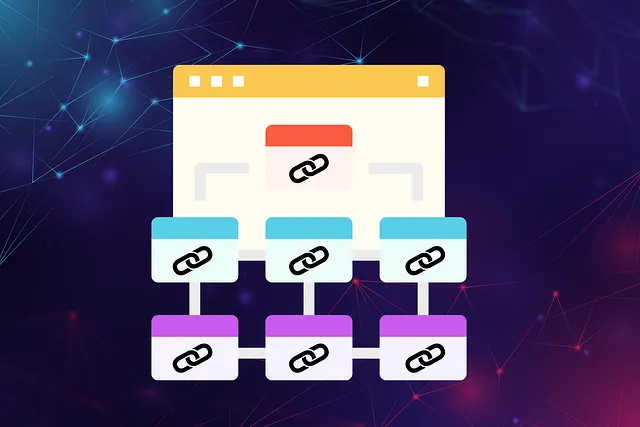Internal links are crucial for Search Engine Optimization (SEO), enhancing website visibility and user experience by connecting relevant pages within a site. Strategically placed, these links guide users and search engine crawlers through the site's structure, improving engagement and providing deeper exploration of content. Essential for SEO, internal links signal to search engines that a site offers rich, interconnected content. When beginning an SEO journey, mastering internal linking is key; identify valuable content, link "key pages" for enhanced user experience, and create a logical information flow. Effective internal linking involves using descriptive anchor text, natural distribution, and measuring KPIs to optimize performance.
“Unleash the power of your website with the strategic implementation of SEO internal links. This beginner’s guide aims to demystify the concept, highlighting its significance for enhancing user experience and boosting search engine rankings. We’ll walk you through setting up a robust strategy by identifying vital pages, creating an efficient structure, and implementing best practices. Discover how these links can drive traffic, optimize your site, and leave a lasting impression on both users and search engines.”
- Understanding Internal Links: The Basic Concept
- Why SEO Internal Links Are Important for Your Website
- Identifying Key Pages for Internal Linking
- Creating a Strategic Internal Linking Structure
- Implementing Internal Links: Best Practices
- Measuring and Optimizing Your Internal Link Strategy
Understanding Internal Links: The Basic Concept

Internal links are a fundamental part of Search Engine Optimization (SEO) and play a crucial role in enhancing your website’s visibility and user experience. These links, as the name suggests, connect relevant pages within your site, guiding users and search engines to related content. It’s akin to creating a navigation network that allows visitors to explore your website seamlessly while also helping search engine crawlers understand the structure of your site better.
When implementing SEO internal links, the primary goal is to improve the overall user journey. Strategically placed links within your content can lead readers to additional valuable resources, fostering engagement and providing a more comprehensive experience. For instance, including relevant internal links in blog posts can direct readers to related articles, encouraging them to delve deeper into your website’s offerings. This not only benefits visitors but also signals to search engines that your site offers rich, interconnected content, which is a key factor in SEO.
Why SEO Internal Links Are Important for Your Website

Search engines like Google rely on internal linking to understand and crawl a website effectively. When you implement a strategic SEO internal links strategy, you’re essentially guiding search engine crawlers through your site’s content, helping them discover new pages and recognize their importance. This process is crucial for improving your site’s visibility in search results, as it allows Google to index your pages more efficiently.
Using how to use SEO internal links effectively can boost the authority of specific pages within your website. By linking to relevant articles or resources from within your content, you’re telling both the search engines and your audience that this page is valuable and deserves higher rankings. An SEO internal links tutorial will often highlight best practices like placing links naturally within the content, using anchor text that describes the linked page accurately, and ensuring a logical flow of information throughout your site.
Identifying Key Pages for Internal Linking

When starting your journey with SEO, understanding how to use internal links effectively is a crucial step. The first step in this process involves identifying key pages that can benefit from strategic linking. These are typically central pieces of content on your website that offer significant value to users and search engines alike. For instance, a blog post providing an in-depth guide on a specific topic or a product page detailing a unique offering could be considered key pages. The goal is to enhance the overall user experience by interconnecting relevant content, making it easier for visitors to navigate your site and boosting its credibility in the eyes of search algorithms.
To create a robust SEO internal links strategy, you can employ various tips from our tutorial and learn how to effectively incorporate these links within your content. Start by analyzing your website’s structure and identifying areas where internal linking can improve user engagement and optimize for relevant keywords. Prioritize pages with high potential impact and ensure that the links are contextually relevant, providing users with a seamless experience as they explore your site.
Creating a Strategic Internal Linking Structure

Creating a strategic internal linking structure is an essential step in optimizing your website for search engines and enhancing user experience. When implementing SEO internal links, the key is to organize your site’s content in a logical and hierarchical manner. Start by identifying the main topics and themes that are central to your website. Then, create a plan where each page supports one or two specific topics, creating a natural flow of information. For instance, if you have an article about “Digital Marketing Strategies,” link to other relevant pages like “Social Media Marketing Tips” or “SEO Best Practices.” This interconnectedness helps search engines understand the context and relevance of your content.
Remember, SEO internal links tips include not only placing links strategically but also ensuring they provide value. Each internal link should direct users to content that offers new insights or complements their current interest. By following a well-designed SEO internal links strategy, you can improve page authority, boost search engine rankings, and keep visitors engaged with your website for longer periods. The ultimate goal is to create a seamless user journey while optimizing your site’s performance in the eyes of search engines.
Implementing Internal Links: Best Practices

Implementing internal links is a powerful strategy for any website aiming to enhance its SEO and user experience. For beginners, understanding how to use SEO internal links effectively can significantly improve your site’s visibility in search engine results pages (SERPs). Start by identifying relevant content within your site that provides value to visitors. Linking to these related articles or resources not only guides users through your site but also signals to search engines the importance of specific pages and topics.
When creating internal links, keep the following best practices in mind: ensure anchor text is descriptive and accurately represents the linked page’s content. Avoid generic phrases like “click here” as it offers little context to both users and search algorithms. Instead, use targeted keywords that reflect the content of the destination page. Additionally, spread out your internal link placement naturally throughout your content; don’t overdo it by stuffing links into one section. Properly optimized SEO internal links will not only drive organic traffic but also contribute to a more structured and accessible website, benefiting both your visitors and search engine crawlers.
Measuring and Optimizing Your Internal Link Strategy

Measuring your internal link strategy is a crucial step to understand its effectiveness. Utilize SEO tools to analyze your site’s click-through rates (CTRs) from internal links, which can reveal popular content and identify areas for improvement. Keep an eye on page views per session and bounce rates; these metrics will help you gauge user engagement and the overall success of your internal linking strategy. By tracking these key performance indicators (KPIs), you can optimize your SEO internal links by targeting relevant pages with strategic anchor text, ensuring a natural flow of link equity throughout your site.
To enhance your SEO internal links optimization, focus on creating a well-structured and intuitive navigation system that encourages users to explore related content. Organize your content into logical clusters, making it easier for both search engines and visitors to discover relevant pages. Regularly review and update your internal linking structure as your website grows, ensuring that no valuable content is left unlinked. This strategic approach will not only improve user experience but also boost the overall SEO value of your internal links, driving better rankings and increased organic traffic.
